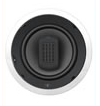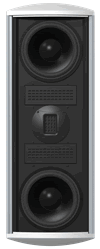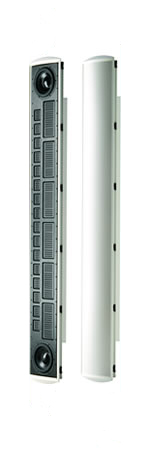BGRadia Speakers and Planar Tweeter technology...
Take a look at a few of the BGRadia speakers below and notice one key visual difference compared to what you might expect to see on speakers.
![]()



Do you see the difference? No little round tweeter, that's right.
So, what are we looking at here? BGRadia has developed and deployed Planar Tweeter technology. If you are into the geek-speak about these read on but, for the rest of us, here is the quick and dirty explanation:
Sound is propagated by compression waves. The traditional round tweeters push air based on their physical dome shape and therefore those sound waves propagate across the room in a given way.
Planar Tweeters are instead a flat surface as opposed to the dome surface. Therefore, the sound waves propagate through a space much differently. The high frequency sounds that are produced by the planar tweeters do not decay as rapidly and have a wider dispersion....
uuh, too geeky? Well, lets see... another way of saying this is you can sit much further away from the speakers and get the same quality of sound from the tweeter as you can if you were sitting much closer. An added benefit is that so called " sweet spot" (that position right in the middle of two stereo speakers where the music sounds like it's in your head) is much broader. That way, more listeners can be within that area where the sound is best.
Besides the Planar Tweeter technology, BGRadia are very well built consisting of solid construction and quality materials.
Now for the Geek-Speak directly from BGRadia web site:
The cone-type class of loudspeaker produces a characteristic radiation pattern that is best described as “point-source,” with output level diminishing rapidly as the distance increases between the listener and speaker. The classic expression of this phenomenon is that sound pressure level is inversely proportional to the square of the distance. The practical acoustical effect is that there is a 6 decibel (4-fold) drop in level with every doubling of distance.
Line-source radiators like the BG's Radia "LA" series do not suffer the same physical and psycho acoustic limitations, as they are characterized by sound pressure levels that are linearly inversely proportional to the distance, resulting in a 3 decibel reduction in level with every doubling of distance rather than the 6 decibel drop with point-source radiators.
This effect is obtained for distances up to roughly two to three times the height of the line-source driver itself and is applicable to the frequency range where the length of the driver is long relative to the wavelength of interest. Assuming that the listener is 1 foot from the left speaker, and 8 feet from the right, the right will be attenuated 9 dB with line-source radiators, and 18 dB with point-source radiators.
The 9 dB difference translates nearly exactly to the subjective sense of one-half, i.e., the right speaker will be subjectively judged to be one-half as loud with the point-source speaker as with the line-source.
At the user level, this means that as the listener moves closer to the left loudspeaker and further from the right, the left and right channel levels will remain relatively constant, with the left growing louder less rapidly, and the right growing softer less rapidly, than would be the case with point-source speakers.
Conventional Speakers present distinct and inherent engineering challenges. Any cone type woofer or dome tweeter moving system mechanically represents a shell that is excited by a force through a voice coil along the singular circular line at its edge.
As taught in physics, this is the most "favorable" condition for inducing resonance behavior in the shell. As a result, most cones are operating in the frequency range that produces break-up resonance, creating linear and non-linear distortion. There are also many other sources distorting the original signal in a conventional transducer such as motor system and suspension non-linearity, air compression and wave front distortion in horns and so on.
New achievements in sound reproduction are achieved with BG Planar Magnetic Drivers. First of all, the BG Planar diaphragm is directly and uniformly driven. There is no voice coil attached to the edge. An electromagnetic force acts on the aluminum conductors and is evenly distributed over the entire diaphragm surface. This eliminates the tendency to generate distributed resonance vibrations. Secondly, BG drivers do not have additional glue joints and parts. Nothing stays on the path of transforming electrical energy into sound, just a light tightened membrane, which is not the case for a conventional driver. BG Planar drivers are also phase coherent over their entire operational band while cones and domes have an inherent phase "smear" due to their depth (or profile). Another important aspect in performance is the difference in the mass of the moving system. The thin diaphragm of a Planar driver is ten times lighter than any compression driver diaphragm and even hundreds of times lighter than a woofer cone. This allows for an instantaneous response to the arriving signal as well as to the smallest changes in that signal. The low mass of a BG Planar moving system also allows for rapid decay after the impulse. All this results in superior transparency and low-level resolution not available in a conventional transducer. |
 |
Contact us for more information or stop by our showroom in Sedona, AZ to listen to BGRadia speakers in action!